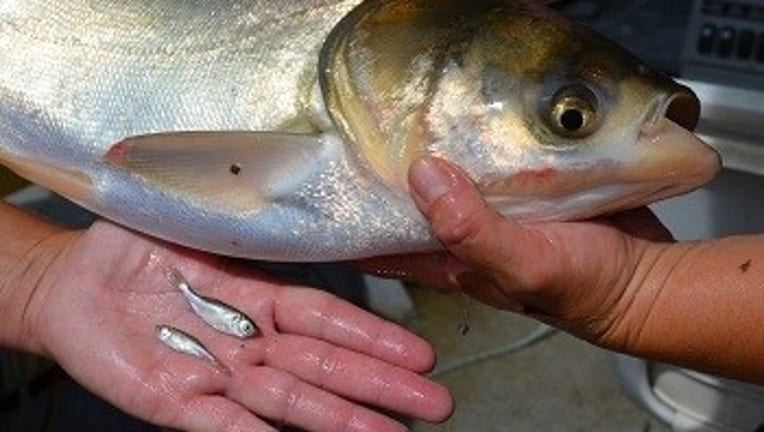Asian carp DNA found in southwest Michigan marina

Invasive silver carp juveniles and adult - note the low-set eyes and downturned mouth on the adult fish. Photo courtesy of the Invasive Carp Regional Coordinating Committee.
(FOX 2) - Evidence of an invasive Asian carp subspecies was found in a southwest Michigan river, according to the Michigan Department of Natural Resources.
Routine surveillance for signs of certain fish in the environment picked up a positive sample for silver carp, one of four Asian carp species that threatens the Great Lakes.
Data was provided to the DNR by the U.S. Fish and Wildlife Service. The agency said only one data point out of hundreds of samples confirmed evidence of silver carp during the month of June. It was reported in the St. Joseph River, near Benton Harbor.
Along with silver, bighead, grass, and black carp all pose a major threat to the biodiversity in the lake system. Only grass carp has been found in the bodies.
However, the sample doesn't necessarily mean the invasive species has established itself in the Great Lakes.
"It is possible for genetic material to be introduced from other sources, such as boats or fishing equipment used in another state where invasive carp are present, then transported and used in Michigan waters," said Seth Herbst, a program manager with the DNR.
There were 220 samples taken from the St. Joseph River between Lake Michigan and Berrien Springs. The positive sample was taken near Marina Island.
MORE: More Great Lakes trouble as new research finds Asian carp could establish in Saginaw Bay
The area is home to several marinas and a city boat launch with a lot of recreational use by locals and visitors, meaning the vessels coming into the water are a likely reason the carp DNA found its way into the water body.
The USFWS frequently monitors the St. Joseph River, electrofishing and netting grass carp.

